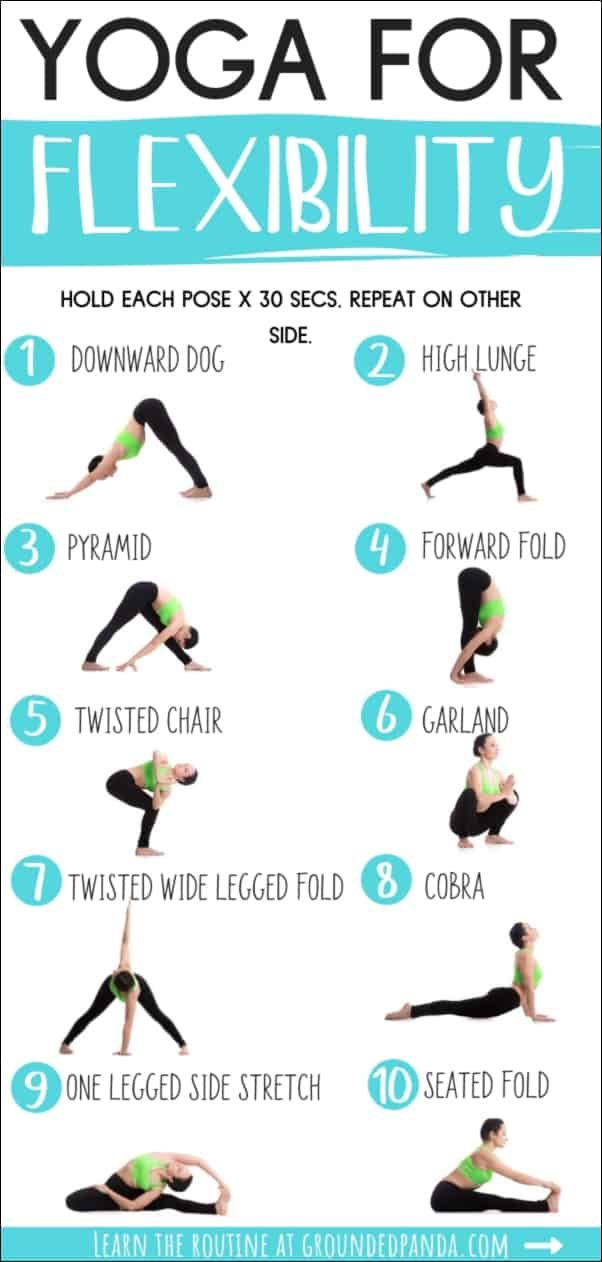
Kids love yoga poses and this easy activity is great for them all. You don't need to rent large spaces or buy expensive equipment to enjoy yoga. Here are some of my favorite poses for children. This backbend is great for stretching the thighs and spine, and it's an excellent way to get your children moving and breathing. Place your knees and ankles in a straight line. Place your arms by your side, and place them on your chest.
Try to get your child into the child position. This is the best pose for children who are constantly on the ground, so it's a great choice for young children. This pose is similar to a small bean, and requires a deep breath. It is also great for children who spend a lot time sitting. Begin by asking your child to count to five as you hold the pose. This will help calm them and help them relax.

For children, the cow pose is a good option. To make the pose more difficult, you can place a pillow or blanket under their buttocks. This pose is calming and helps strengthen the back. Another option is the "boat" position, where you stand on your buttocks and form a "V". Rocking your child can make this even more enjoyable. This pose can be done with your child.
This is a great stretch for recovery. Relax and sit cross-legged. Now, slowly bend forward and rest you head on your forearms. While this pose may not last for long, it helps your child become more connected to their body. This will make you healthier. They will also be able to exercise more efficiently and have better coordination. You will be their biggest fan. Once you have mastered the yoga pose for children, you will be able to incorporate it into daily life.
A simple pose that children can do is the butterfly position. This pose is perfect for young children because it extends the legs and knees. This pose is a great way for your child to calm their mind. Although it might seem difficult, the butterfly position is a great way of encouraging your child to stay focused. The butterflies can help calm your child and are also a soothing stretch. These can be achieved by sitting on the floor.

Children can move by taking a child's posture. The child should be able hold the pose for at least a few seconds and be able breathe normally. The child should feel comfortable in this pose. The child should be able maintain their balance by slowing down and breathing deeply. Once they learn how to balance, they will be more likely to stay in the pose longer. The best part is that they can learn the basics and then they can do it on their own.
FAQ
Is Cardio Better Than Strength Training?
Both are equally excellent. But cardio is a much better choice if you want to gain muscles faster.
Cardio burns far more calories per min than strength training. It also burns fat more efficiently.
Strength training increases muscle mass but takes more time than cardio.
Is it true that overeating protein causes kidney stones?
Protein helps to maintain healthy bones, tissue, and skin. Too much protein can cause calcium to be excreted through the urine. This can lead to kidney stone formation.
It's important to note that not everyone gets kidney stones after eating more than 2 grams of protein per kilogram (2.2 pounds) of body weight. High amounts of protein can be consumed by some people without causing kidney stones.
Your sodium intake can prevent kidney stone formation. The kidneys regulate the amount of sodium they consume. Too much sodium can lead to kidney stones.
If you have kidney stone, you might also consider reducing your protein intake. For most people, protein provides half their daily caloric requirements. Reduce your intake of protein and you will likely lose weight.
If you do decide to eat more protein, don't go overboard. Try to eat less than 20% protein in total calories.
How many calories per day should I consume?
This will vary from person-to-person. On average, you need 2000 to 2500 calories per days. Based on your age, gender, height and activity level, you will need to calculate how many calories you require.
What is a good 7-day workout schedule?
A seven-day exercise program should consist of three days per week of cardiovascular training (running, biking, swimming), two strength exercises (using free weights, weight machines), and one flexibility/core workout (yoga, Pilates). Each activity should be performed at least once each week. Each session should not last more than 45 minutes.
Cardiovascular Exercise: Running/Biking/Swimming
Aim to do at least 60 minutes per week of cardio. To achieve the best results, aim to exercise for at least 75 minutes each week. Cardio exercise can stimulate blood flow and increase muscle growth.
Strength Training
Cardio exercises target your heart and lungs. Strengthening your muscles and bones is the opposite. Strength training increases lean muscle mass and helps to burn calories even at rest.
Flexibility & Core Workouts
Flexibility and core workouts are great ways to strengthen your entire body. Both yoga as well as Pilates are great choices.
What is a good daily gym routine?
Regular exercise is key to staying healthy. No matter what kind of exercise you do, as long you do it consistently. Consistency is key. You must be consistent if you are to see results.
Begin by starting to do a little bit of physical activity each day (like walking). Then gradually increase the time spent exercising until you spend 30 minutes a day working out. You can do this running, swimming weight training, yoga or aerobics classes.
Try to make sure you exercise on all days of the week. If you have a reason to miss a session, don't skim it.
You should wear the appropriate clothing and footwear if you are exercising outdoors. It is important to take into account the weather conditions, and how they may affect your ability to exercise safely.
Make sure that you drink plenty of water while you're exercising. Drinking alcohol at this time can lead to dehydration. Caffeinated beverages such as tea, coffee, and cola should be avoided. They can provide energy, but they also dehydrate.
At first, it's normal to feel tired after you finish your exercise routine. If you stick with your training program, you'll feel more awake and alert.
Statistics
- By John Thompson Take a whopping 38% off a set of PowerBlock Pros. (menshealth.com)
- According to the American Academy of Dermatology (AAD), men over 50 are at a heightened risk of developing it. (healthline.com)
- 10 pounds in a month is likely during a lean bulking phase, especially for beginners. (muscleandstrength.com)
- Candidates and applicants must pass all four tests at 70% (minimum level) to graduate from Basic Deputy U.S. Marshal (BDUSM) Training. (usmarshals.gov)
- Cardmembers earn 5% Back at Amazon.com with a Prime Credit Card. (amazon.com)
External Links
How To
What nutrients does a man require daily?
For healthy growth and development, men need to eat a balanced diet. Vitamins, minerals, vitamins, nutrients, carbohydrates, fats and fiber are all essential for the body.
Specific nutrients are also required by the male body at different times during the day. Your body makes hormones, antibodies and enzymes when you are asleep. When you awake, protein is used by your body to build muscles or repair damaged tissue.
Your body stores extra energy as glycogen and breaks down fat at night. Your body still requires sufficient nutrients and calories even though it needs less calories. If you feel hungry, you can have a snack in the evening.
When you work out, you need adequate levels of carbs and protein to fuel your muscles. You may feel sore muscles if you exercise hard.
To prevent this from happening, you need to consume carbs or protein within two hours. Your body will use stored glycogen to produce glucose for energy.
You must also eat protein right after you finish your workouts. This prevents muscle tissue being destroyed while you're sleeping.
Your body produces lactic acid during high levels of physical activity. Lactic acid builds up in the bloodstream and causes fatigue. You can avoid this by eating carbohydrates-rich foods like fruits and veggies.
Carbohydrates can give your body the energy it requires to recover from intense exercise.
Additionally, lean meats, fish and eggs, dairy products, yogurt, cream, cheese, yogurt and beans can be added to your diet.
All of these foods contain high-quality protein. Protein promotes muscle growth and repairs damaged tissues. Protein also supplies the amino acids your body requires to make sex hormones, such as testosterone.
Good skin, hair, and joint health requires adequate dietary fats. Healthy men require between 20% and 35% of total caloric intake from fat.
Fat helps protect your heart health and prevents cancer. It is essential for proper brain function.
You can get the majority of the fats that you need from vegetable oils such as soybean oil.
These oils are high in monounsaturated fatty acids (MUFAs). MUFAs are good for lowering cholesterol and reducing inflammation. They also protect your cells from damage caused by free radicals.
Saturated fats (SFAs), are found mainly in animal products such as meat, milk products, and butter. SFAs can increase LDL ("bad") cholesterol as well as triglycerides. They are also good for weight loss and belly fat.
Polyunsaturated fats (PUFAs) are found in plant-based sources like vegetable oils, nuts, seeds, and grains. PUFAs improve cardiovascular function and decrease inflammation. They also reduce blood sugar, cholesterol, and other inflammatory factors.
Low HDL ("good") cholesterol is a common cause of erectile dysfunction in men. Consuming high amounts of saturated fats can increase bad cholesterol and lower good cholesterol.
Because of the high levels of nitrates in red meat and pork, men with prostate problems may eat more of them. Nitrites convert to nitrosamines when cooked at high temperatures. These compounds can cause cancer.
Many processed meats are high in nitrites, and other dangerous chemicals. Avoid them.
The American Heart Association recommends eating no more than 2 servings of red meat per week. Instead, opt for poultry, fish, legumes and tofu as well as whole grains bread and cereals.